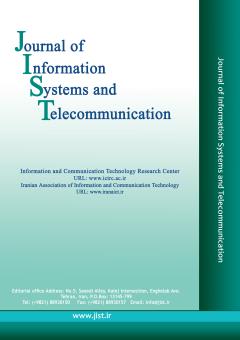Performance Evaluation of Xception Networks and Short-Time Fourier Transform Spectrograms for Motor Imagery Classification
Subject Areas : Image Processing
Masoud Sistaninezhad
1
![]() ,
Habib Rasi
2
*
,
Aliakbar Abdollahinezhad fard
3
,
Habib Rasi
2
*
,
Aliakbar Abdollahinezhad fard
3
1 - Seraj Institute of Higher Education, East Azerbaijan, Tabriz, Iran
2 - Sahand university of technology
3 - Tabriz University
Keywords: Motor imagery, Xception network, convolutional neural network, short-time Fourier transform, deep transfer ,
Abstract :
Short-time Fourier transform (STFT) in classifying electroencephalogram (EEG) signals with a limited number of training samples, utilizing pre-trained deep transfer learning. While most deep learning research has primarily focused on one-dimensional time series inputs, utilizing two-dimensional inputs offers a promising approach for leveraging EEG signals in deep learning models. In this study, a novel two-dimensional STFT-based method was employed to transform EEG signals into images, which were then classified using the Xception model. The BCI Competition IV dataset 2b, consisting of EEG signals from nine participants, was utilized for performance evaluation. This dataset allowed for a comprehensive analysis of the proposed STFT+Xception approach for classifying motor imagery signals. Notably, this study is the first to report the results of this approach in such a context. The obtained results demonstrated the effectiveness of the STFT+Xception approach in classifying motor imagery signals with a limited number of EEG samples. The average classification accuracy exceeded 80% for all nine subjects, showcasing the robustness of the proposed method. Furthermore, the standard deviation across subjects was found to be remarkably low, measuring only 2.9%. These findings highlight the potential of the STFT+Xception approach for accurate and reliable classification of EEG signals, even with limited training data. Additionally, the study identified avenues for further improvement. Applying data augmentation techniques and training the model from scratch with augmented data may yield even more successful results in future experiments. This indicates the potential for enhancing the classification performance and expanding the applicability of the proposed approach to broader EEG datasets.
[1] C. M. Yilmaz, “Classification of eeg-based motor imagery tasks using 2-d features and quasi-probabilistic distribution models,” Doctoral dissertation),, The Graduate School of Natural and Applied Sciences, Karadeniz Technical University, Trabzon, Turkey, 2021.
[2] X. An, D. Kuang, X. Guo, Y. Zhao, and L. He, “A deep learning method for classification of eeg data based on motor imagery,” in INTELLIGENT COMPUTING IN BIOINFORMATICS, ser. Lecture Notes in Bioinformatics, D. Huang, K. Han, and M. Gromiha, Eds., vol. 8590, 2014, pp. 203–210.
[3] C. Uyulan, “Development of lstm&cnn based hybrid deep learning model to classify motor imagery tasks,” COMMUNICATIONS IN MATHEMATICAL BIOLOGY AND NEUROSCIENCE, 2021.
[4] M. S. Gouri and K. S. V. Grace, “Lpoa-drn: Deep learning based feature fusion and optimization enabled deep residual network for classification of motor imagery eeg signals,” SIGNAL IMAGE AND VIDEO PROCESSING, vol. 17, no. 5, pp. 2167–2175, JUL 2023.
[5] D.-H. Kim, D.-H. Shin, and T.-E. Kam, “Bridging the bci illiteracy gap: a subject-to-subject semantic style transfer for eeg-based motor imagery classification,” FRONTIERS IN HUMAN NEUROSCIENCE, vol. 17, MAY 15 2023.
[6] M. Kaur, R. Upadhyay, and V. Kumar, “E-cnnet: Time-reassigned multisynchrosqueezing transform-based deep learning framework for mi-bci task classification,” INTERNATIONAL JOURNAL OF IMAGING SYSTEMS AND TECHNOLOGY, 2023 FEB 23 2023.
[7] F. M. Garcia-Moreno, M. Bermudez-Edo, M. Jose Rodriguez-Fortiz, and J. Luis Garrido, “A cnn-lstm deep learning classifier for motor imagery eeg detection using a low-invasive and low-cost bci headband,” in PROCEEDINGS OF THE 2020 16TH INTERNATIONAL CONFERENCE ON INTELLIGENT ENVIRONMENTS (IE), ser. International Conference on Intelligent Environments, 2020, pp. 84 -91.
[8] Y. Kwak, W.-J. Song, and S.-E. Kim, “Fganet: fnirs-guided attention network for hybrid eeg-fnirs brain-computer interfaces,” IEEE TRANSACTIONS ON NEURAL SYSTEMS AND REHABILITATION ENGINEERING, vol. 30, pp. 329–339, 2022.
[9] G. R. M.-P. A. S. R. Leeb, C. Brunner and G. Pfurtscheller, “Bci competition iv,” 2008. [Online]. Available: https://www.bbci.de/competition/iv/#datasets
[10] M. Tangermann, K.-R. Mueller, A. Aertsen, N. Birbaumer, C. Braun, C. Brunner, R. Leeb, C. Mehring, K. J. Miller, G. R. Mueller-Putz, G. Nolte, G. Pfurtscheller, H. Preissl, G. Schalk, A. Schoegl, C. Vidaurre, S. Waldert, and B. Blankertz, “Review of the bci competition iv,” FRONTIERS IN NEUROSCIENCE, vol. 6, 2012.
[11] G. Pfurtscheller and F. da Silva, “Event-related eeg/meg synchronization and desynchronization: basic principles,” CLINICAL NEUROPHYSIOLOGY, vol. 110, no. 11, pp. 1842–1857, NOV 1999.
[12] Y. R. Tabar and U. Halici, “A novel deep learning approach for classification of eeg motor imagery signals,” JOURNAL OF NEURAL ENGINEERING, vol. 14, no. 1, FEB 2017.
[13] M. Dai, D. Zheng, R. Na, S. Wang, and S. Zhang, “Eeg classification of motor imagery using a novel deep learning framework,” SENSORS, vol. 19, no. 3, FEB 1 2019.
[14] I. The MathWorks, “spectrogram,” 2023. [Online]. Available:https://www.mathworks.com/help/signal/ref/spectrogram.html
[15] Y. Han, B. Wang, J. Luo, L. Li, and X. Li, “A classification method for eeg motor imagery signals based on parallel convolutional neural network,” BIOMEDICAL SIGNAL PROCESSING AND CONTROL, vol. 71, no. B, JAN 2022.
[16] M. T. D. Nguyen, N. Y. Phan Xuan, B. M. Pham, H. T. M. Do, T. N. M. Phan, Q. T. T. Nguyen, A. H. L. Duong, V. K. Huynh, B. D. C. Hoang, and H. T. T. Ha, “Optimize temporal configuration for motor imagery-based multiclass performance and its relationship with subject-specific frequency,” Informatics in Medicine Unlocked, vol. 36, p. 101141, 2023. [Online]. Available: https://www.sciencedirect.com/science/article/pii/S2352914822002787
[17] Z. Chen, Y. Wang, and Z. Song, “Classification of motor imagery electroencephalography signals based on image processing method,” SENSORS, vol. 21, no. 14, JUL 2021.
[18] Z. Dokur and T. Olmez, “Classification of motor imagery electroencephalogram signals by using a divergence based convolutional neural network,” APPLIED SOFT COMPUTING, vol. 113, no. A, DEC 2021.
[19] M. H. Annaby, M. H. Said, A.M. Eldeib, M. A. Rushdi, “EEG-based motor imagery classification using digraph Fourier transforms and extreme learning machines”, Biomedical Signal Processing and Control, Volume 69, August 2021, 102831.

